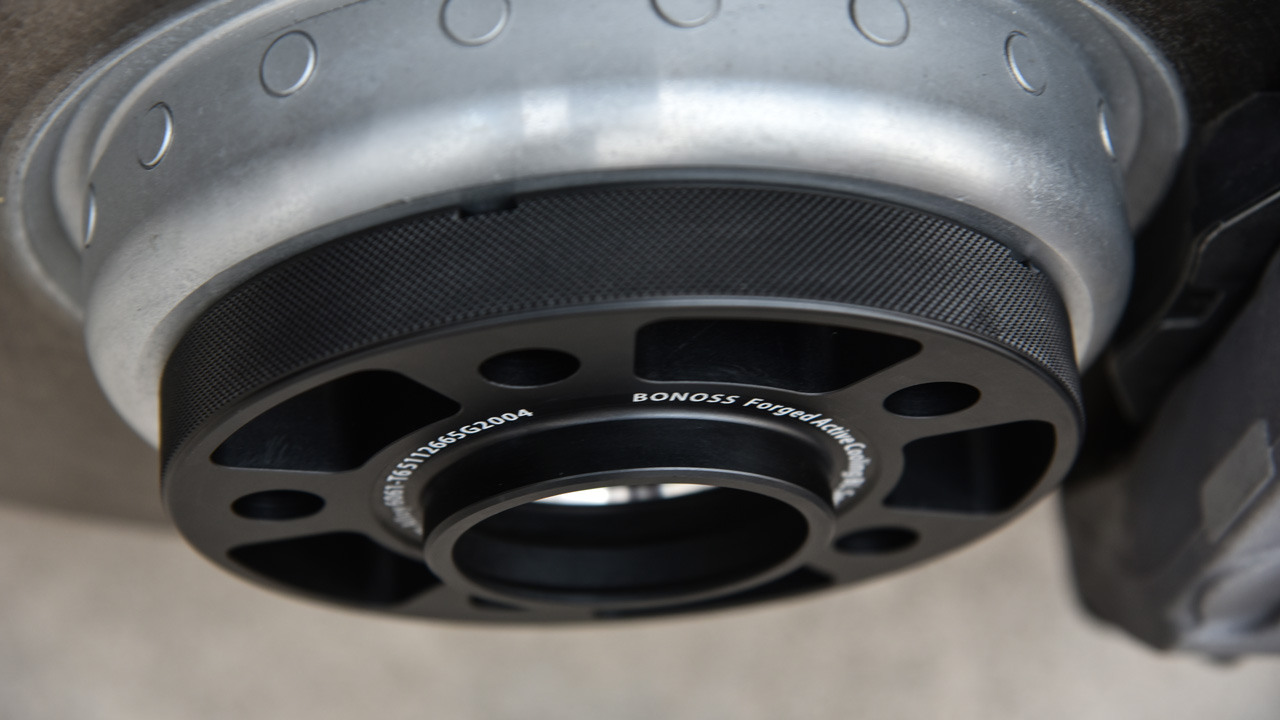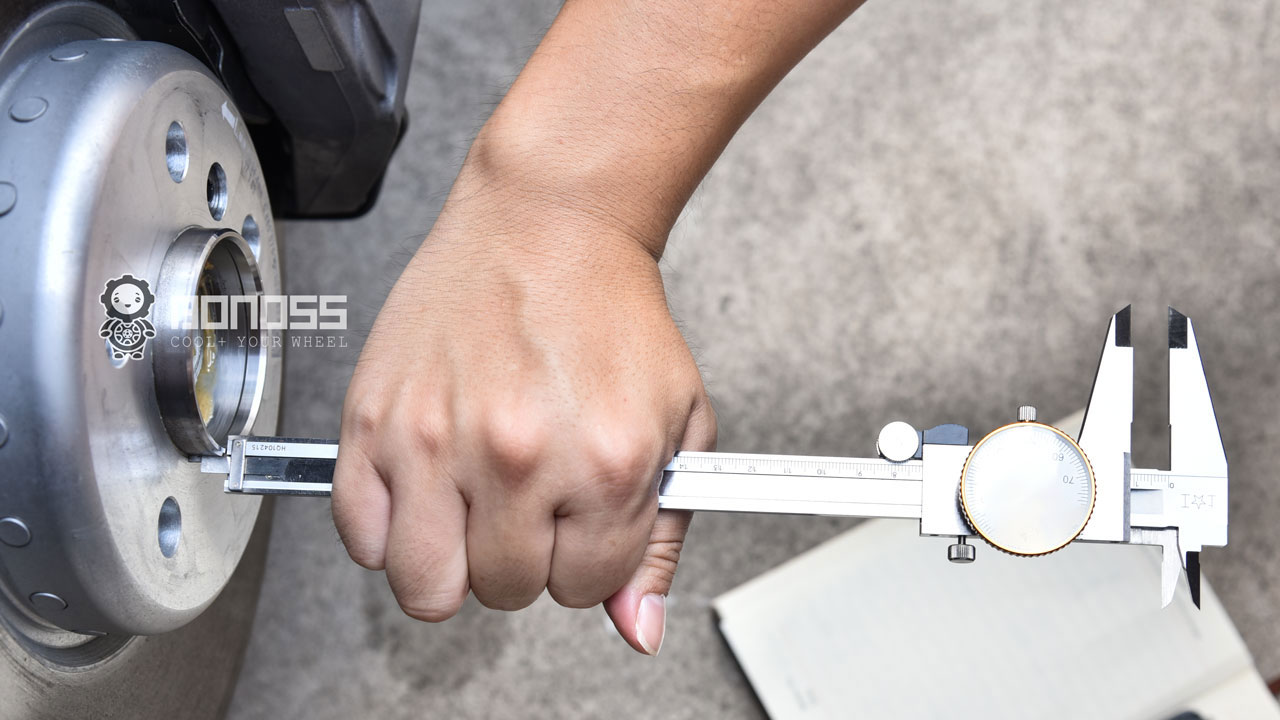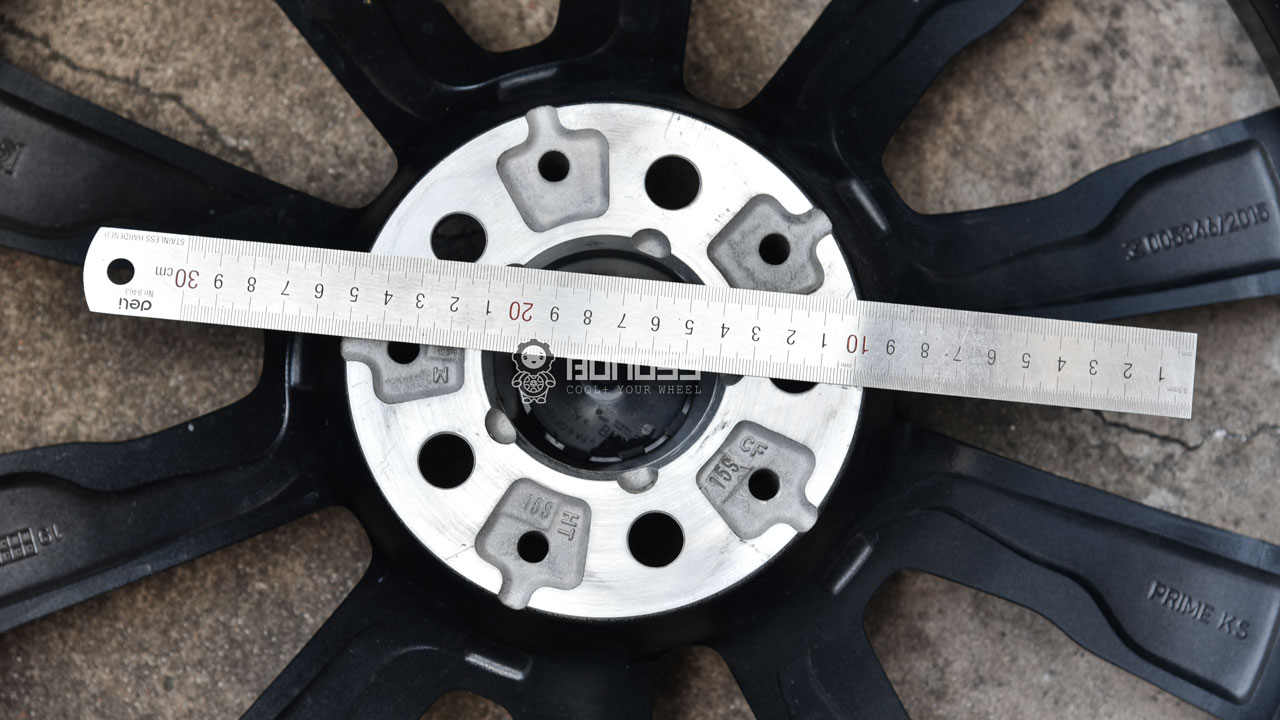
An important factor of wheel spacers safety is the compatibility of the spacers. To ensure a proper spacer fitment, you should care about these two contact faces: one is the interface between the spacer and the wheel hub of the car, and the other is the interface between the spacer and the wheel. The wheel hub on a vehicle means the central rotating part that holds the wheel in place. Generally, there is a protrusion from the center area of the wheel hub, which is used to center the wheel. The diameter of this protrusion is called “wheel center bore”. The length of the extended part is called “wheel hub height”. Measuring the height of this centric flange is critical to check whether the spacers fit your vehicle.
Why Do You Need to Measure Wheel Hub Height?
A hubcnetric wheel spacer comes with a hub-centric lip as a transition point. The inside face of the lip matches the hub protrusion perfectly and the outside face of the lip fits the mounting face of the wheel snugly. So that the spacer will fit over the hub protrusion as well as the wheel. Sometimes the protrusion may stick out the hub centric lip of the spacer by a few millimeters. In this case, the hubcentric lip of the spacers will rub against the wheel mounting plate. Then you need to change to wheel spacers with thinner hub-centric lips. Depending on the design of the spacer it may have a “maximum hub height” that the spacer is able to fit over. Every vehicle is different, that is why knowing the vehicle hub height is important before purchasing a hubcentric wheel spacer. Some hubcentric wheel spacers are machined with a chamfer on the interface of the hub-centric lip. The angle and width of this chamfer are made to contact the hub protrusion perfectly so that there is no gap or any deviation. If this chamfer doesn’t fit the hub protrusion precisely, there will be a gap or tilt of the spacer-hub connection. This will lead to a wheel vibration.


The outside face of the lip will also require a bevel from the flat surface to the lip in order to contact the wheel snugly, which provides strength to the spacer in this area. Typically, the width of these bevels is 2mm to 7mm. To measure this, it is better to measure from the bevel width of the inside mounting face of the wheel.
Do I Need Hubcentric Wheel Spacers?
Some thinner and lighter wheel spacers (like 3mm, 5mm spacers) may not come with hubcentric lips. Without a hub-centric lip, there is no problem with the center bore chamfer interference. But the wheel hub height still plays an important role in the spacer fitment. Assuming your wheel hub height is 8mm, if you add a 3mm spacer, the remaining hub height that contacts the wheel will be 5mm (8 – 3 = 5). If you add 5mm spacers, then there will leave a 3mm hub height of contact. The less hub height that supports the wheel, the higher risk that the wheel gets a vibration. Since these spacers are flat, if the wheel bevel wide enough, there will be a gap. Some fierce impact may push the wheel off of the hubcentric band, which will also result in vibrations. In these cases fitting a 3-8mm spacer needs a very careful calculation. However, things can be easily solved if you contact our tech staff.





